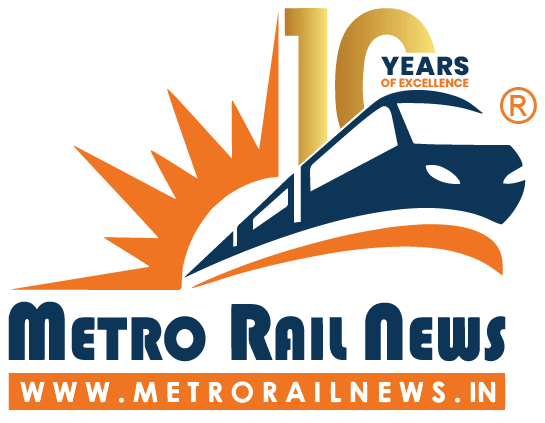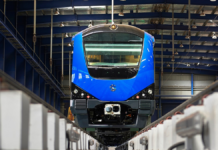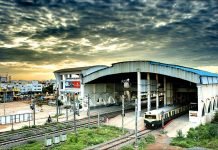DELHI (Metro Rail News): The Union Minister of Housing & Urban Affairs Mr. Hardep Singh Puri shared his vision and opinion for expanding the metro rail network in the country.
The minister recently was expressing his views in a webinar where he spoke as key speaker. Mr. Puri said that there is a need of improved connectivity of metros in Indian cities. Highlighting the development in metro rail network in the country in last the last six years considering it to be the most sustainable mode of public transport system he said that till 2014, there was only 248 kilometres of metro rail network operational in five Indian cities. During a period of 06 years the network has expanded by more than 469 km and today a total of 717 km of metro is operational in 18 cities in the country.
The Union minister while elaborating government’s plan of extending metro rail network said that by 75th year of India’s Independence in 2022, the metro rail network would extend to around 1000 kms by present network. By 2025 at least 25 Indian cities will have a metro network with a total network of 1700 kms.
The Minister said that the focus of the government is to develop an inclusive system together with multimodal integration and last-mile connectivity under the new metro rail policy.
He added that the government has conceptualized two new metro systems – Metro Lite and Metro Neo. Both these metro systems are preferred as per passenger traffic. For smaller cities with peak hour peak direction traffic up to 15000 metro lite is preferable while for PHPDT traffic up to 8000 metro neo is considered. He added that the first Metro Neo system of Nasik with a network of 33 kilometres has been included in the 2021-22 budget while the fist metro lite system is proposed between Rithala and Narela as part of Delhi Metro’s phase IV project.
Speaking about Regional Rapid Transit System (RRTS) in the country proposed between Delhi and Meerut, the first in India, the minister said that the corridor is an innovative dual transit mode with RRTS and metro on the same infrastructure of over 22 kms in Meerut city.
He also spoke about government’s effort of establishing a robust manufacturing industry. He said that the government has managed to do this in rail sector by standardising various components. Explaining standardisation the minister added that it is due to efforts towards standardisation which ensures that the metro rail components in new metro projects conform to prescribed standards and incentivising manufacturers to plan long term investment to set up manufacturing units which helps in reducing cost and promoting indigenisation.
Speaking about rolling stock the Urban Affairs Minister said that minimum local content required for rolling stock is 60 percent. In telecommunications and signalling it is 50 percent, civil works 90 percent and for electrical and mechanical components it is 60 percent. He also said that 64 sub-components of rolling stock, electrical and mechanical traction etc. have also been identified for procurement from local sources.
The minister termed the metro rail projects in India a stellar example of ‘Make in India’ campaign. He stated that the ‘Made in India’ metro equipment is also being exported to countries like Australia and Canada.
Laying stress on need of developing alternative mode of transportation for growing population in India Mr. Hardeep Puri said that due to ever increasing population in the country more than 600 million people would be living in urban cities of India by 2030. This would create a huge pressure on the present transportation system. Therefore, alternative and population friendly metro rail network would be required be developed to cater to the needs of growing population. For this an additional 600-700 kms of metro lines would be required to be developed every year which can only be achieved through domestic manufacturing, he added.
The Urban minister emphasizing economic viability of metro rail projects in India said that the new metro systems like Metro Neo and Metro Lite is helping bring down the construction and operationalization cost of metros substantially. He also added that the domestic manufacturing is helping complete the metro projects timely and speedly in the country. He stated that, in last two years, orders for 1200 coaches have been placed in India with manufacturers such as BEML, Bombardier, Alstom etc.
Speaking about the cost further he said that, the construction of overhead metro in the conventional system costs Rs. 300 crore per km while an underground metro costs Rs 500 crore per K.m but on the other hand construction of Metro Lite per k.m costs just Rs 120-140 crores. In case of Metro Neo the cost further comes down to Rs 60 –Rs 80 per km. Adding about PHPDT (Peak hour peak direction traffic) the minister told that both Metro lite and Mtro Neo are capable of performing in terms of carrying capacity roughly the same load at the fraction of the cost.
Metro Neo can be used 8000 PHPDT while Metro Lite has a PHPDT of 15000, he added. Speaking about creation of UMTAs (Unified Metropolitan Transportation Authorities) the minister said that the creation of UMTAs shall facilitate coordinated planning, implementation and management of urban transport programmes in the country. He said that the government is moving towards UMTAs in the nation. Four states – Kerala, Karnataka, Tamil Nadu and Madhya Pradesh are already having it.






